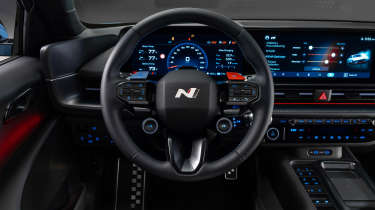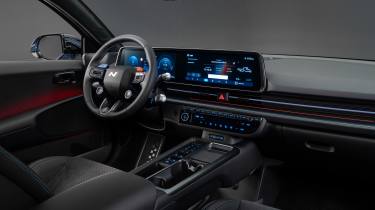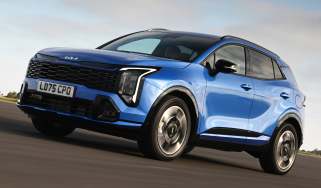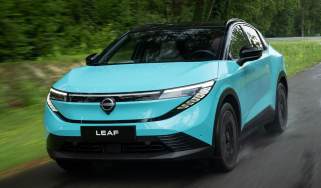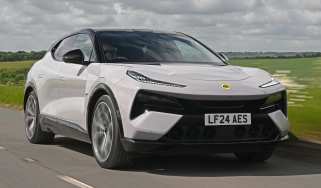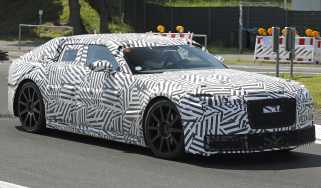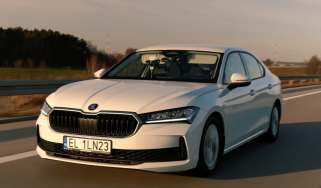New Hyundai Ioniq 6 N revealed, and it has the power to slay the BMW M3
The hot Hyundai Ioniq 6 N electric saloon will use, and diversify, the brand's high-performance technology
The covers have come off the long-awaited Hyundai Ioniq 6 N at the 2025 Goodwood Festival of Speed, with the unlikely BMW M3 rival showing off its sleek, streamliner-inspired shape and track-honed dynamics on the historical hillclimb over the four-day weekend.
Almost two years to the day since Hyundai revealed the Ioniq 5 N at the same event in 2023, the firm has released its follow-up to what many critics have coined the new benchmark for performance electric cars. But according to Joon Park, Vice President of the firm’s N Management Group, the 5 “was just the first lap. We are at the starting line,” he told us, pledging that the new car would move things on despite the 5’s impressive abilities.
The Ioniq 6 N gets much of the same tech, cloaked in a lower, sleeker body, with the addition of lightweight alloy wheels, a huge rear wing and ducktail spoiler. Hyundai’s head of design, Simon Loasby, previously told Auto Express: “With the Ioniq 6 N we had the chance to widen the fenders front and rear, which we couldn’t do on the 5 N. Who doesn’t like a wide body?”
As such, the 6 N has been widened by 60mm versus the standard car, with bulging wheelarches wrapped around new 20-inch rims and bespoke Pirelli P-Zero 5 tyres. Based on the recently-facelifted Ioniq 6, the N gets split headlights and daytime running lights, plus a longer, lower nose and plenty of trick aero and cooling features nestled within a new front bumper. There’s lots of red detailing to the side, while at the rear a black mask gives the flagship its own look. The firm’s recognisable pixel LEDs are present and correct across the back end, of course.
Power, specs and battery
Under the metal, the Ioniq 6 N features the same dual-motor powertrain as its 5 N sibling, mated to an identical 84kWh battery. Combined output stands at 641bhp – almost 100bhp more than BMW’s M3 CS – with 779Nm of torque and motors that can spin at up to 21,000rpm. The 6’s slippery shape results in a drag coefficient of 0.274Cd and cuts the 0-62mph time to 3.2 seconds using the car’s N Launch Control function. Top speed is capped at 160mph.
Park told us the 6 N is “for all N-thusiast drivers”, claiming the swept-back saloon is more focused than the 5N, thanks to its reengineered chassis and fully-redesigned suspension geometry with semi-active dampers. Along with the saloon’s lower roll centre, this apparently “enhances track performance while preserving the ride comfort expected in daily driving”. We can certainly vouch for the former, following our recent drive in a prototype model in South Korea. Hyundai also claims the 6 N delivers “greater high-speed stability and improved cornering grip, making it a versatile performer on both the street and the circuit”.
As well as tweaks to the suspension and transmission, Hyundai has developed a new battery-conditioning system that optimises performance depending on how the car is being used. There are different set-ups for drag, sprint and endurance racing – with the latter designed for “long-lasting performance”. An improved ‘N e-Shift’ system is said to “minimise performance loss” compared with the same set-up in the Ioniq 5.
Hyundai N Active Sound
Elsewhere, the 6 sees the debut of Hyundai’s ‘Active Sound +’ set-up, which the firm said delivers “greater driver feedback”, making each journey “aurally immersive”. The three modes span ‘Ignition’, ‘Evolution’ and ‘Lightspeed’, with each offering a “captivating auditory experience”.
As before, the car’s ‘N Grin Boost’ function delivers maximum power via a red button on the steering wheel for up to 10 seconds, with senior engineer Sven Risch explaining how the system makes the “full power more reachable; the limit is more reachable”.
Elsewhere, the updated ‘N Drift Optimiser’ offers three levels of regen-activated torque oversteer, allowing owners to customise parameters for things like angle and wheel slip depending on skill level and driving style. Park told us this is just one example of how Hyundai is “listening to fans” to make its cars more engaging.
The front brakes measure 400mm with four-piston callipers, with an adjustable regen system capable of harnessing up to 0.6G of energy that would otherwise be lost. As in all Hyundai EVs, the strength of recuperation can be tweaked via paddles on the N-branded steering wheel.
Interior and tech
The 6 N’s cabin will feel familiar to anyone who’s sat in or driven an Ioniq 5 N, featuring hard-backed bucket seats with illuminated N logos, ambient lighting and a dual-screen infotainment system with built-in nav, wireless phone connectivity and bespoke N menus.
One such menu is the ‘N Track Manager’, which allows drivers to analyse and compare track times on well-known circuits, as well as create custom routes in order to monitor speed data and performance. It can even offer Gran Turismo-style ghost-car visuals.
What the Ioniq 6 N lacks in range – this is a near-650bhp, M3-rivalling super-saloon, remember – it more than makes up for with its 800-volt electrical architecture and ultra-rapid charging speeds of up to 260kW. That means it should be able to replenish 80 per cent of its 291-mile range in 18 minutes; on par with the standard Ioniq 6 models.
Prices haven’t been announced, but we can expect a small premium over the 5 N, meaning an expected starting figure in the region of £70,000. Production for the Korean domestic market starts in September, with global deliveries expected soon after.
Can't wait for the Hyundai Ioniq 6 N? Configure your perfect Hyundai Ioniq 5 N through our Find A Car service now. Alternatively, check out the best deals out there on a new Hyundai Ioniq 5 N from stock or top prices on used Hyundai Ioniq 5 N models...
Find a car with the experts



